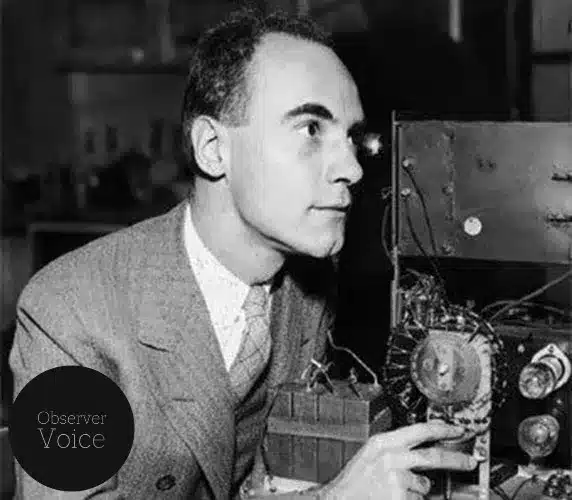Carl David Anderson (3 September 1905 – 11 January 1991) was an American physicist. He was awarded the Nobel Prize in Physics in 1936.
Life and Career
He was born on 3 September 1905, in New York, U.S. He did his schooling at Los Angeles Polytechnic High School, and then he went to the California Institute of Technology for his college education. In 1927, he graduated with a BSc in Physics and Engineering. He got his Ph.D. three years later.
After finishing his doctorate, he worked as a research fellow at the California Institute of Technology from 1930 to 1933.
While he was at it, he started studying cosmic rays with Professor Robert Millikan in 1930. He discovered unexpected particle tracks by taking photos of his cloud chamber. His interpretation was that they were created by a particle with the same mass as the electron, but with the opposite charge.
Finally, in 1932, Paul Dirac’s theories confirmed this discovery, and the positron was discovered. Positron’s discovery was a historic milestone in physics since the particle was the first antimatter particle to be discovered.
During the following year, he and Neddermeyer discovered that gamma rays from ThC generate positrons as they pass through matter. In order to create positron-electron pairs, he shot gamma rays into other materials.
He was promoted to the position of Professor of Physics in 1938 after serving as assistant Professor for six years.
He and Neddermeyer discovered the muon in 1936, a subatomic particle that was 207 times heavier than an electron but had the same negative charge and spin as an electron.
He worked on an artillery rocket project for the U.S. Navy during World War II.
His research into radiation and fundamental particles continued until the end of his life. Many of his discoveries have been published in journals such as the Physical Review and Science.
He died on 11 January 1991, in San Marino, California, U.S.
Award
He won the Nobel Prize in 1936 for discovering the positron.
In 1945, he was awarded the Presidential Certificate of Merit.
In 1950, he became a Fellow of the American Academy of Arts and Sciences.

